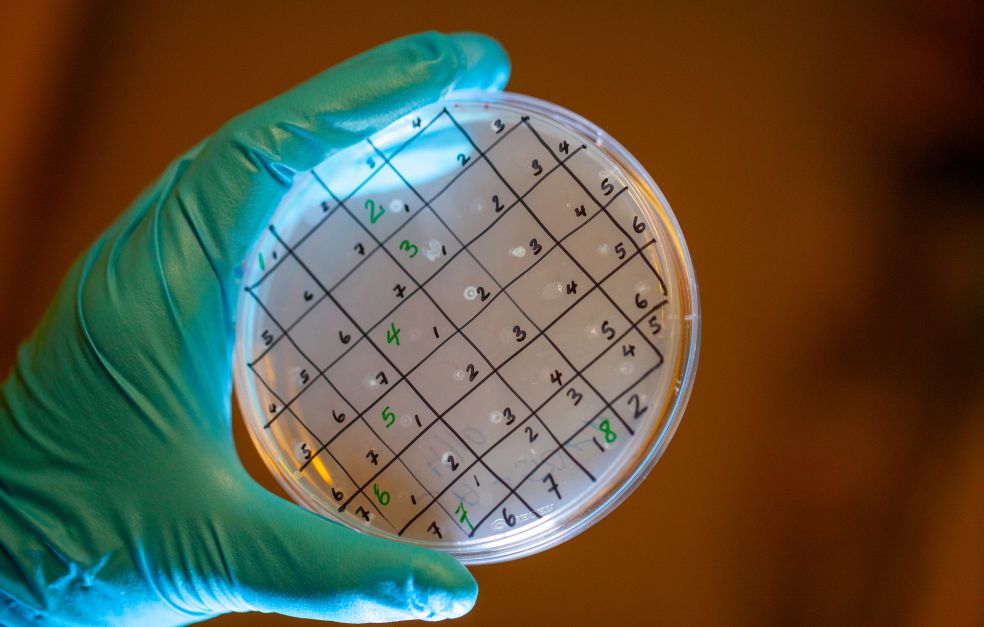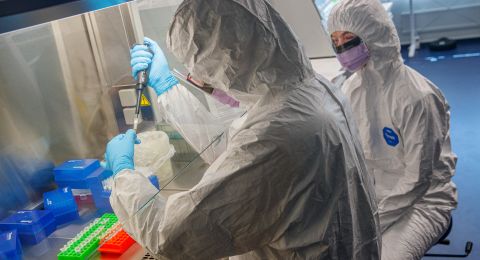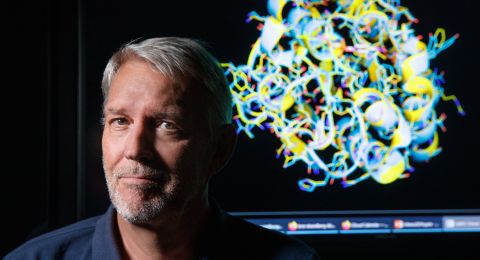Wallenberg Scholar Leif Andersson is pursuing his passion for researching the genetic riches of the animal kingdom. His subjects range from horses and pigs to herring. His research highlights the relationship between genetics and individual traits, and provides new insights into cancer and viral diseases.
Leif Andersson
Professor of Functional Genomics
Wallenberg Scholar
Institution:
Uppsala University
Research field:
The evolution of domestic animals – a model for generating basic knowledge of the genetic background of traits. Genetic studies of natural populations based on whole genome sequencing.
Andersson has always been interested in biodiversity. As a young biologist in the 1980s he read Darwin, and was struck by a passage describing how humans changed the traits of domestic animals by selective breeding. Darwin believed that similar changes had occurred in nature based on natural selection.
At that time the door was opening to modern DNA technology, and Leif realized the potential it offered.
“Throughout my career I have wanted to explore the link between genetic variations and individual traits.”
The range of topics is wide – from the reason some horses amble to the difference in beak size in Darwin’s finches in the Galapagos Islands. Practical applications of the findings include veterinary medicine and agriculture. They are also important in understanding how diseases arise.
Greying with age in horses and skin cancer
One example is melanoma, a form of skin cancer. It started when Andersson wanted to find out more about the peculiar phenotype Greying with age in horses. These horses are born black, but their coats quickly start to go white. Using the primitive genetic tools available to him at the time, he compared greys with other horses. In those days there were only 15 genetic markers to study, and the search was fruitless. Only in recent years has the technology caught up.
“We now have millions of genetic markers to study – which tells us something about developments in the genetics field.”
In a section of DNA Leif and his colleagues located a specific mutation that stimulates stem cells to mature into pigment cells in the follicle. The “grey gene” not only causes horses to grow a white coat; it also increases their risk of skin cancer. One reason for this is the formation of a larger number of active pigment cells in the skin.
“We have now moved on to studies on mice, but have not identified the same mutation in them. The question is whether humans are more like horses in this respect.”
Now that the Wallenberg Scholar grant has been extended, Andersson wants to carry out further detailed studies. The idea is that the mechanism can teach us how cancer as a genetic disease occurs.
“The grant has been a huge help in assuring research funding, and enabling me to establish a research environment over a number of years. It has played a crucial part in the successful results we have had over the past few years. For my part, I see our research as a way of raising the general level of knowledge and furthering the Foundation’s motto that the research it funds should be for the benefit of Sweden.”
Mutation behind muscle growth
Another line of research was based on the genetic differences between wild boar and domestic pigs. The discovery of a genetic mutation explained why domestic pigs bred gain so much muscle mass.
“It is a mutation that has done much to rationalize meat production. A pig weighing 100 kilos at slaughter can yield four kilos more meat without having had to eat more food.”
But what causes this difference? Andersson’s research team identified a previously unknown protein, which they called ZBED6, and which acts like a switch – it turns different genes on and off and regulates muscle growth. The gene was integrated in the DNA of the ancestors of today’s mammals some 200 million year ago and appears to have an essential function in all mammals.
Antiviral drugs
Further research by the team has yielded an unexpected discovery. The ZBED6 gene is found inside another gene, which codes for a protein that affects virus growth. Viruses have adapted to using this host protein to their own advantage. But when the researchers used the CRISPR/Cas9 gene editing tool to knock out the gene, virus reproduction rate slowed.
“We can impair the ability of the virus to replicate by disrupting its interaction with the protein.”
The phenomenon has been found to work on several common viruses: adenovirus, influenza virus, HIV and herpes simplex. This offers hope for new retroviral therapies. What began as a genetic study of muscle growth in pigs has led to a potential medical application.
“We are now approaching the drug development phase. The idea is to reduce the quantity of virus so the infection is less acute, and the immune system is able to deal with it.”
Solving the herring mystery
Over the past few years Andersson turned his attention once more to a mystery that has bugged him for many years: the herring riddle.
Whole genome sequencing offers new potential for studying natural populations. Fish samples that had been waiting in the freezer for 35 years were brought out again. Although Linnaeus classified Baltic herring as a separate subspecies, herring and Baltic herring have a very similar genetic make-up.
“But the differences between them are crucial to the Baltic herring’s adaptation to life in the Baltic Sea,” Andersson points out.
One example is a mutation in rhodopsin, a protein that acts as one of the eye’s light receptors. Baltic herring see red light better. Fresh or brackish water, like that of the Baltic, has more of a reddish tinge. Selection probably takes place at the larval stage, enabling fry possessing the Baltic variant to see better in the Baltic Sea, thereby finding it easier to avoid predatory fish and find food. The study also reveals genetic adaptations to different levels of salinity and temperature differences.
“Herring and Baltic herring are a gold mine for exploring how a species adapts to its environment.”
The new findings can be used to promote sustainable fisheries. The genetic markers make it possible to keep track on different fish communities, and adapt fishing quotas accordingly.
“The herring fishery is among the five most important marine fisheries in the world, and it is essential to manage stocks of these fish responsibly,” Andersson says.
Text Nils Johan Tjärnlund
Translation Maxwell Arding
Photo Magnus Bergström






